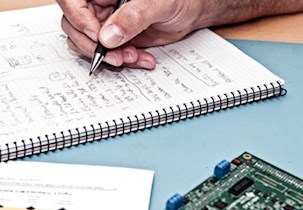The importance of good requirement specification for reliability of electronic products
Many Danish companies unknowingly waste valuable development resources by failing to create precise and clear requirements. Is your company one of them?
A strong requirement specification, which is available to all project participants and shared with all subcontractors, is an important tool for developing reliable and robust products that meet the relevant requirements from the authorities, the customers and your company.
In the specification phase, it is imperative that there are sufficient resources and the necessary knowledge to ensure that the requirements are verifiable and testable.
What is your company's starting point?
Preparing a good requirements specification can require the use of a number of different techniques, depending on which of the following the project is aimed at:- a brand-new product
- a new technology to produce your existing product
- new features for an existing product
- or a new application or new surroundings
Use scenarios play a critical role, particularly when developing brand-new products. Whether you are part of an established company or a startup, these scenarios help you gain clarity on the user needs and expectations, forming a strong foundation for your requirements specification.
If, on the other hand, it is one of the other cases listed above, then it is a good idea to start from an existing requirement specification.
Does your requirement specification include both hardware and software?
You can save a lot of time and money in the development process by establishing clear success criteria and specific reference standards for each requirement related to:
- Hardware
- Software
- Mechanical specifications
- Operational life cycle
- Use environment
Do you use agile software development techniques?
In principle, requirement specifications are not part of agile software development, but many companies benefit from having an overall requirement specification before starting the development process. This provides a clear direction and sets expectations for the project’s goals.At that point, you can create specifications on the basis of, among other things, user stories, which you can typically keep track of with the help of a tool, such as Jira.
Review your requirements and save important resources
Another way to save significant resources is by conducting a review of your requirements. This review should be conducted in collaboration with someone who is external to the project because internal teams, often are too familiar with the project and may overlook issues. It can be either someone in your company who is not involved in the project or an independent third party.
During the review, among other things, we assess whether the requirements are:
- nationwide
- clearly separated from comments, implementation, background, etc.
- testable
- specified for the relevant product level and do not mix up system and component level specifications.
- mutually consistent



